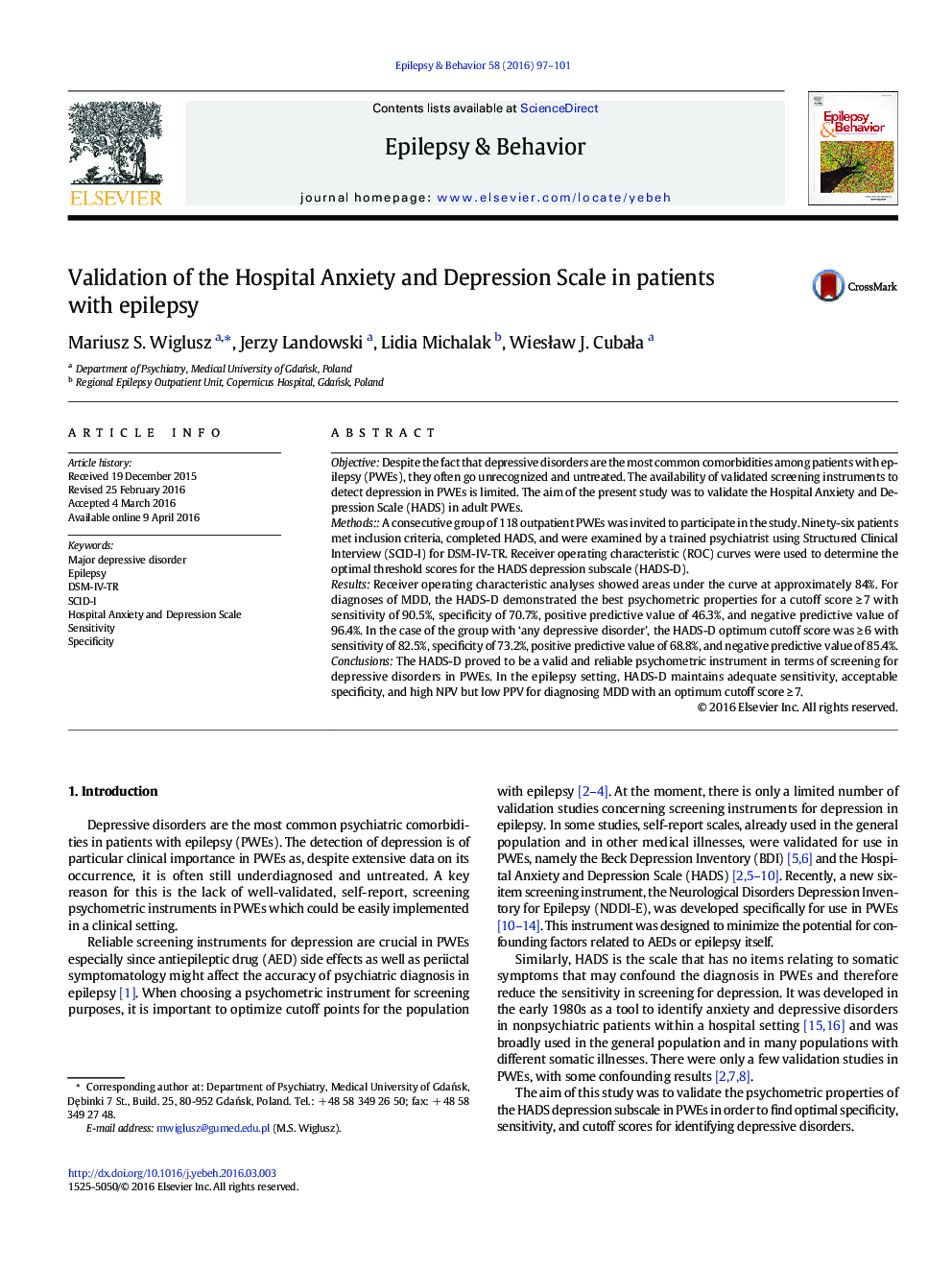| Article ID | Journal | Published Year | Pages | File Type |
|---|---|---|---|---|
| 6010172 | Epilepsy & Behavior | 2016 | 5 Pages |
â¢HADS performs consistently in terms of screening for depressive disorders in PWEs.â¢HADS depression subscale at a cutoff point â¥Â 7 had the best balance of sensitivity and specificity.â¢Cutoff points appropriate for patients with epilepsy should be selected for major depression.
ObjectiveDespite the fact that depressive disorders are the most common comorbidities among patients with epilepsy (PWEs), they often go unrecognized and untreated. The availability of validated screening instruments to detect depression in PWEs is limited. The aim of the present study was to validate the Hospital Anxiety and Depression Scale (HADS) in adult PWEs.Methods:A consecutive group of 118 outpatient PWEs was invited to participate in the study. Ninety-six patients met inclusion criteria, completed HADS, and were examined by a trained psychiatrist using Structured Clinical Interview (SCID-I) for DSM-IV-TR. Receiver operating characteristic (ROC) curves were used to determine the optimal threshold scores for the HADS depression subscale (HADS-D).ResultsReceiver operating characteristic analyses showed areas under the curve at approximately 84%. For diagnoses of MDD, the HADS-D demonstrated the best psychometric properties for a cutoff score â¥Â 7 with sensitivity of 90.5%, specificity of 70.7%, positive predictive value of 46.3%, and negative predictive value of 96.4%. In the case of the group with 'any depressive disorder', the HADS-D optimum cutoff score was â¥Â 6 with sensitivity of 82.5%, specificity of 73.2%, positive predictive value of 68.8%, and negative predictive value of 85.4%.ConclusionsThe HADS-D proved to be a valid and reliable psychometric instrument in terms of screening for depressive disorders in PWEs. In the epilepsy setting, HADS-D maintains adequate sensitivity, acceptable specificity, and high NPV but low PPV for diagnosing MDD with an optimum cutoff score â¥Â 7.
